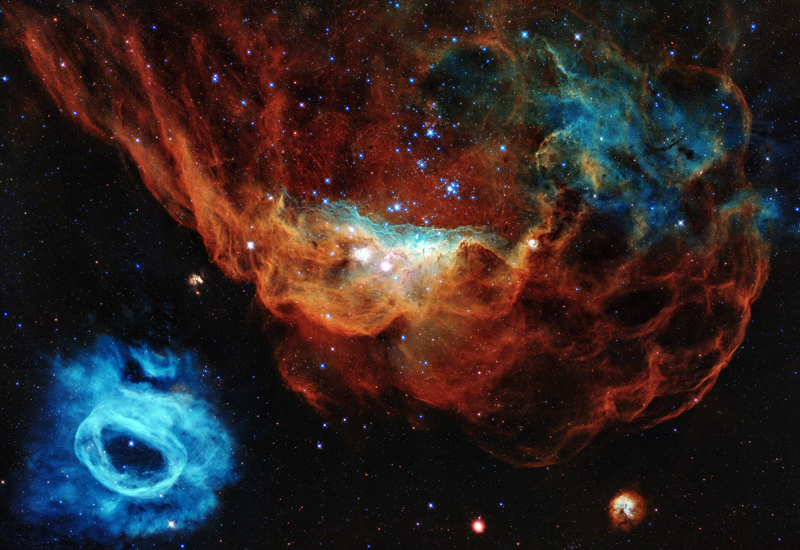| Hubble celebrates its 30th anniversary with a tapestry of blazing starbirth. The star in this Hubble image is 15 times more massive than our Sun and is unleashing powerful winds, which have cleared out the area around it. It has ejected its outer layers of gas, sweeping them around into a cone-like shape, and exposing its searing hot core. The behemoth appears offset from the centre because the telescope is viewing the cone from a slightly tilted angle. In a few million years, the star might become a supernova. The brilliant blue colour of the nebula comes from oxygen gas that is heated to roughly 11 000 °C, which is much hotter than the hydrogen gas surrounding it.
Stars, both big and small, are born when clouds of dust and gas collapse because of gravity. As more material falls onto the forming star, it finally becomes hot and dense enough at its centre to trigger the nuclear fusion reactions that make stars, including our Sun, shine. Massive stars make up only a few percent of the billions of stars in our Universe. Yet they play a crucial role in shaping our Universe, through stellar winds, supernova explosions, and the production of heavy elements. Image: Hubble / ESA / NASA. |
